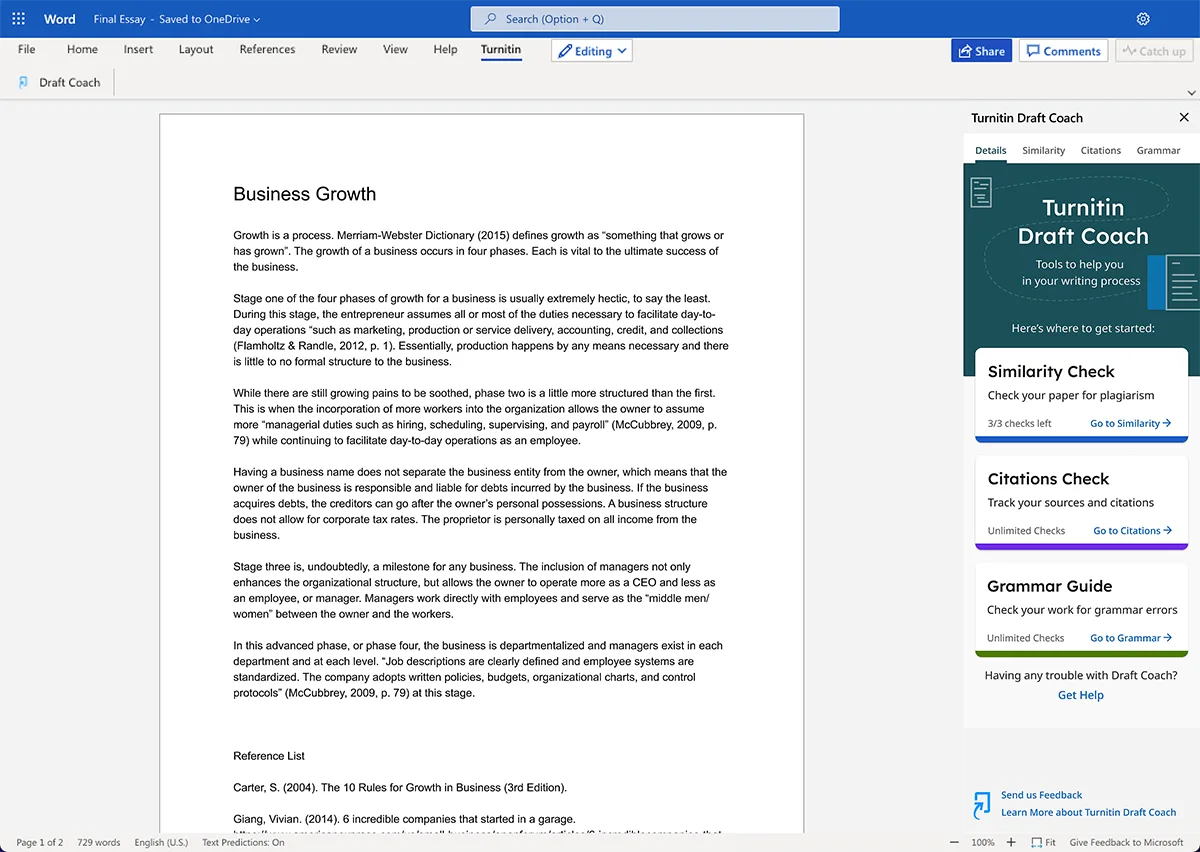Feedback is a cornerstone of teaching and learning, but what type of feedback is beneficial for students? For secondary and higher education, new research offers up some answers.
Analyzing more than 3,000 essays from secondary and higher education globally, the latest research from John Hattie, author of Visible Learning, shows that “Where to next?” feedback can lead to bigger gains in student learning.
How “Where to next?” feedback works
“Where to next?” feedback gives students direction on how to take the next steps to improve their learning and performance. This kind of feedback typically has three components:
- Issue: Identifies a misunderstanding/mistake in the student’s work.
- Relevance: Defines why the issue matters in the context of the assignment.
- Action: Suggests how the student can resolve the issue without “giving away” the answer.
Here’s an example of “Where to next?” feedback about an unclear sentence from a student’s writing assignment:
- Issue: This section of text may be difficult for readers to understand.
- Action: Read this sentence out loud and ask for instructor or peer feedback to determine how to write your ideas more clearly.
- Relevance: Some aspects of sentence construction, such as syntax, word choice, and extra or missing words or punctuation marks, can affect the way that readers understand your writing.
- Action: Pay close attention to those pieces of your writing to ensure you are being clear and precise.
The timing of feedback is also critical. Feedback should be given shortly after students have handed in their work to give them the opportunity to apply the feedback and adjust their work on an ongoing basis. When feedback is provided at the right time, students can better contextualize, understand, and implement what they’ve learned in their assignments.
Introducing Turnitin Draft Coach
Providing quality feedback to every student at the right moment can be challenging, especially with the ever-growing demands and disruptions educators face during the school year. Integrated with the built-in capabilities of Microsoft 365, Turnitin has launched Draft Coach in Microsoft Word for the web.
Drawing from John Hattie’s “Where to next?” research, Draft Coach gives secondary and higher education students guidance about how to address accidental plagiarism, citation, and grammar issues. The example feedback mentioned earlier is an actual piece of grammar feedback from Draft Coach.

Sample writing feedback from Turnitin Draft Coach in Microsoft Word.
Draft Coach helps educators provide effective feedback to any student when they need it. With each “Where to next?” comment, students build critical writing and research skills that help set them up for success throughout their education journey. Draft Coach empowers students by giving them access to essential learning tools anytime and anywhere they write.
When students autonomously use Turnitin Draft Coach to pre-check their essays before submission, not only are they working on their writing and research skills—they are submitting a higher quality piece of writing. Thus, they can get higher quality feedback from their teachers.”
Annie Chechitelli, Chief Product Officer at Turnitin
Draft Coach has won The EdTech Awards for Research and Reference Tools Solution by EdTech Digest, the EdTech Breakthrough Awards, a Gold Stevie® for Learning Capacity-Building Solution, and Best of Show at ISTE 2022 from Tech & Learning.
How to get started with Draft Coach
Draft Coach is free for schools with an institutional license to Microsoft 365 and Turnitin Feedback Studio or Originality. You can set up Draft Coach now using quick-start guides for Feedback Studio and Originality administrators. If you’re interested in Draft Coach, but don’t have Turnitin, please visit the Draft Coach site for more information.
Learn more about how Microsoft 365 Education, including Word, Excel, PowerPoint, OneNote, Microsoft Teams, plus additional classroom tools, can support your students to accelerate their learning and achieve better learning outcomes. With Microsoft 365 Education, you can unlock creativity, promote teamwork, and provide a simple, safe experience—all in a single, affordable solution for education.










